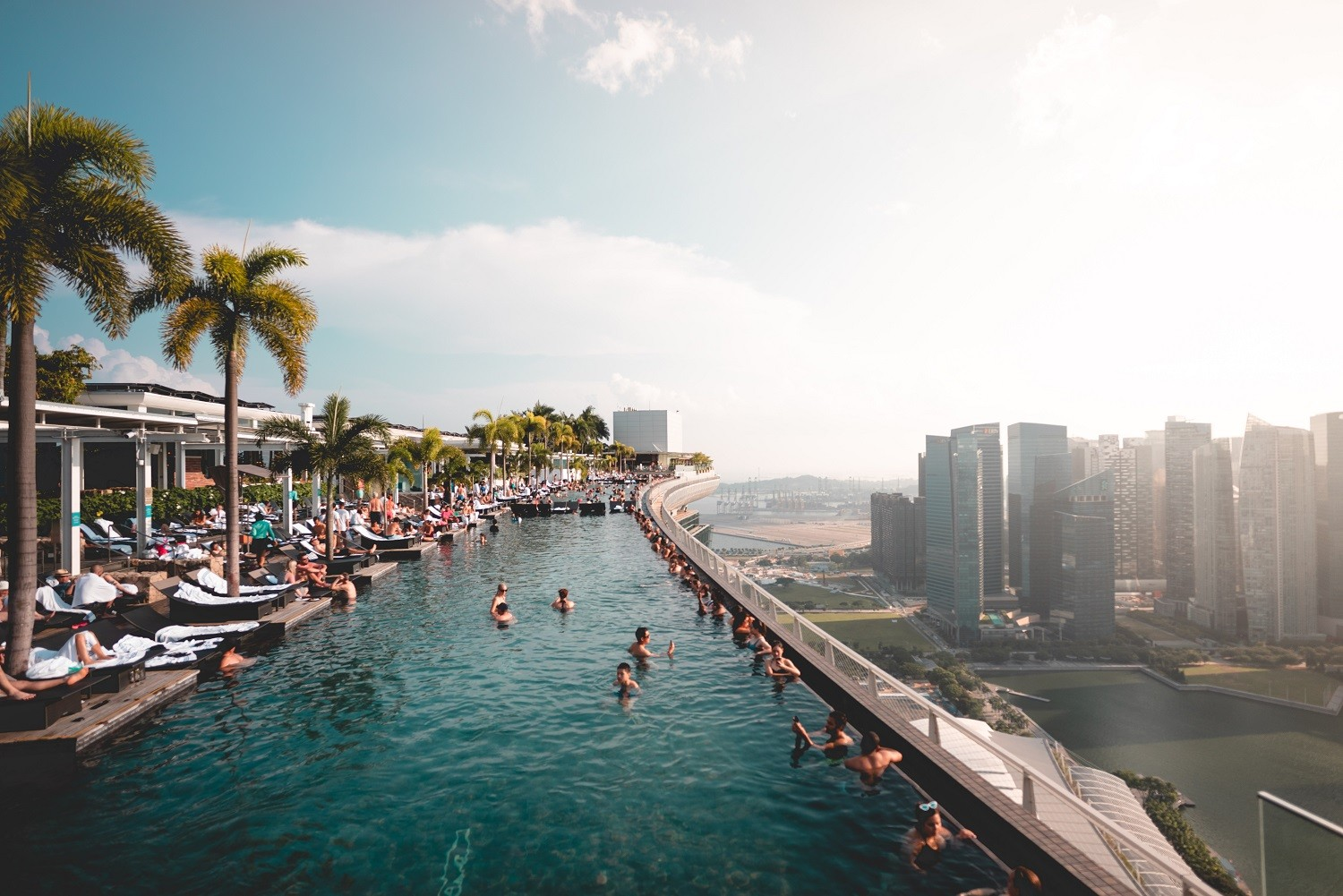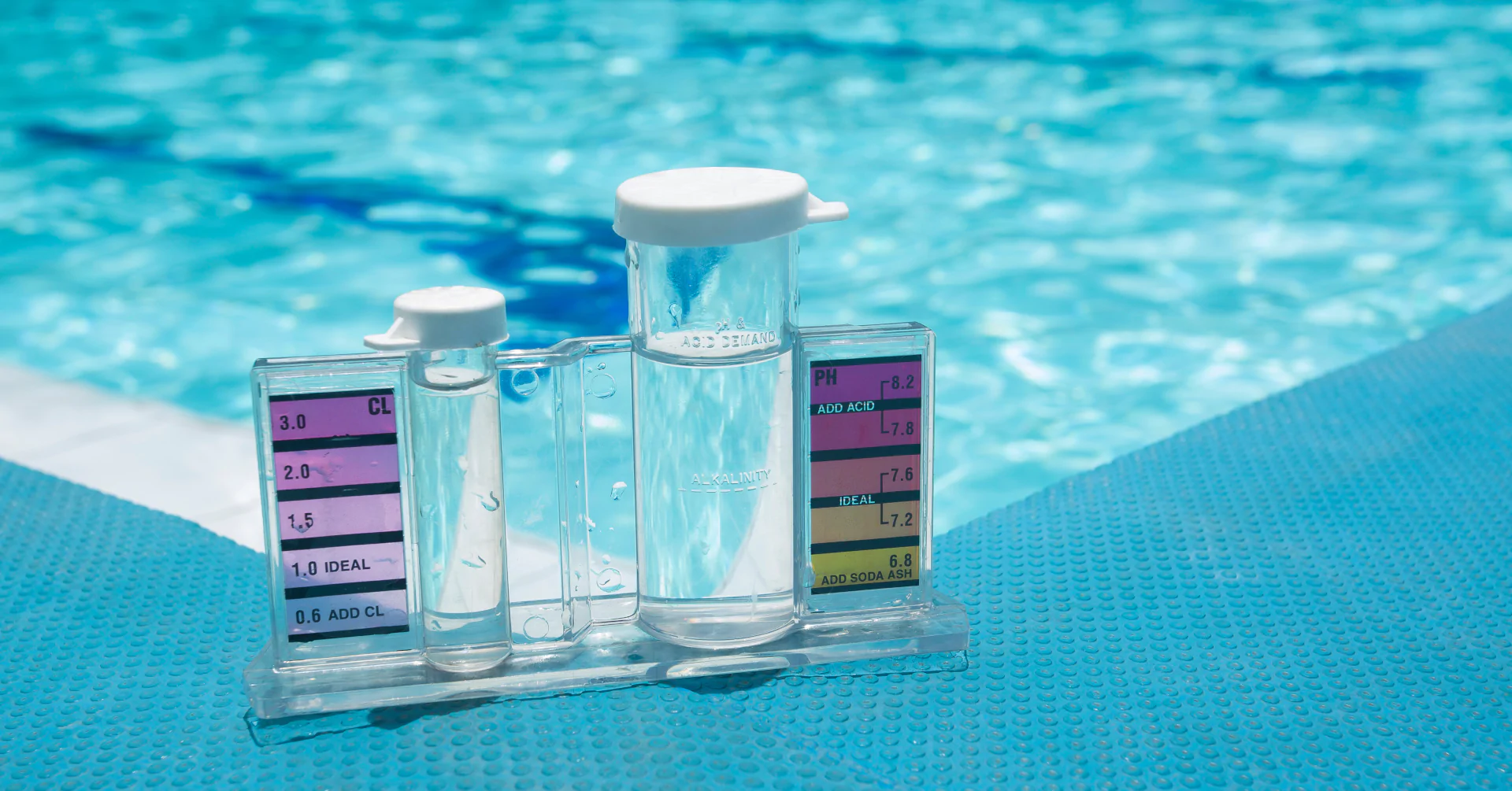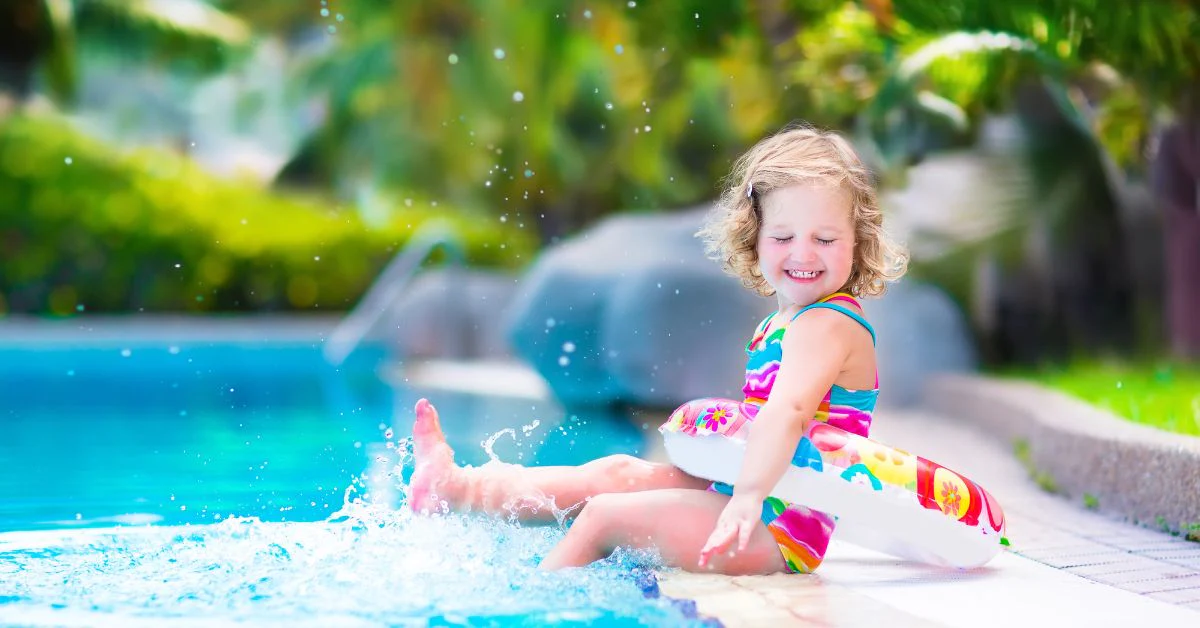

The World’s Most Famous Pools: Part 1
Die Malediven (Foto von One & Only Reethi Rah) Es gibt fantastische Pools auf der ganzen Welt, und dann gibt es die Pools, die wir


There are four major elements to consider when dealing with proper pool chemistry. First and foremost, it’s important to note that this balance of measurements is very important for keeping your pool clean, happy, and healthy.
The 4 we will discuss here are:
Chlorine
pH
Total Alkalinity (TA)
Calcium Hardness
Before we get into the numbers, let’s review a few chemical safety tips.


So now that we’re safe, let’s have a look at proper pool chemical levels.
For most pools, chlorine is used as the primary disinfecting agent. It is known to kill a wide range of harmful bacteria that can grow in water.
The proper level of chlorination is between 1 and 3 parts per million. During hot, sunny months, you may also have to shock your pool, or at least treat it more frequently, as sunlight shortens the effective life of chlorine.
Ideally, a proper pool pH is between 7.4 and 7.6 parts per million. Depending upon certain conditions, however, it may be more likely to be able to maintain a range of 7.2 to 7.8. Anything above or below that can cause issues.
A low pH is associated with acidity, and can damage your pool and other equipment over time.
A high pH will make your chlorine treatments less effective.
Similar to pH, TA outside of recommended ranges can damage your pool surface (liner, gunite, etc.) and equipment.
TA should always be between 80 and 120 PPM.
There’s a direct relationship between TA and pH, so you may also find that if your TA is off, you’ll see your pH levels fluctuate frequently, making it tough to properly balance.
Proper TA levels also make chlorination more effective, so being outside of normal ranges can make you have to use chlorine more frequently, or shock your pool often once TA and pH return to acceptable levels.
Calcium hardness is one of the tougher things to manage properly, as where you get your water from will dictate your starting levels.
Water wants to have a specific level of calcium, and it will naturally try to correct itself. Hard water, or water containing too much calcium will remove it, and you may notice white deposits on your ladder or other pool parts.
Soft water will attempt to gain calcium, and will actively take it from any source it can find, such as the walls of your pool if it contains it.
A proper calcium hardness is between 180 & 400 parts per million, with 220 being close to ideal.
While there are many factors that impact pool chemistry, one thing is for sure: leaving debris in the pool to rot over time can play a major role in water quality issues. So aside from just keeping things looking great, vacuuming up leaves and other things that may fall in helps protect your investment long term.
Aiper offers a full line of robotic vacuum cleaners right for any pool. Use our easy vacuum selector and make your life easier today!


Die Malediven (Foto von One & Only Reethi Rah) Es gibt fantastische Pools auf der ganzen Welt, und dann gibt es die Pools, die wir


Keeping your skimmer box clean goes a long way towards not only the overall look of your pool, but also the long term health of


It’s becoming less of a luxury and more commonplace to see swimming pools as part of the garden landscape. However, this pleasurable asset also comes with


Owning a pool is a wonderful experience, but it does require a fair bit of maintenance. With the blazing summer heat and increasing humidity levels,


As we round the corner into the warmest months of the year, swimming is on the to-do list for every child and most families. While
Last Updated Date: 2024/5/29
This Cookie Privacy Notice (the “notice”) applies to the use by Aiper of cookies and other similar technologies on the Aiper websites (the “Website”). The purpose of this notice is to provide you with information about what cookies are and how they work. It also explains what cookies we use, what they do and how you can control what cookies we use when you visit our Website. This notice should be read alongside our Website Privacy Notice which gives full details of how and why we use your personal information when you are using the website and provides details about your legal rights in relation to your personal information and how to contact us if you have a complaint.
References in this notice to “you” or “your” are references to individuals who use the Website.
1. What are cookies?
Cookies are text files containing small amounts of information which are downloaded to your device (e.g. computer, smartphone, electronic device which accesses the internet) when you visit a website. Cookies can be useful because they allow a website to recognize a user’s device, preferences and generally help to improve your online experience.
2. What types of cookies do we use and how long do they last?
There are six types of cookies that we use, Necessary Cookies, Functional Cookies, Analytics Cookies, Performance Cookies, Advertising Cookies and Uncategorized Cookies. These cookies perform different functions as explained below above the relevant cookies’ sections.
We use both first-party and third-party cookies. First-party cookies are set by the website you are visiting. Third-party cookies are set by a domain which is different from the website you are visiting.
Cookies can be either session cookies or persistent cookies. Session cookies are cookies which are deleted when you close your internet browser. Persistent cookies stay in place after you have closed your browser, for example, a cookie which tracks whether you are a new or returning visitor to the Website. Details on how long these cookies last for are set out below.
3. Necessary Cookies
Necessary cookies are essential in order to provide you with the services you request on our Website and in order that we can comply with legal obligations such as our security obligations under data protection law. We do not need to ask for your consent in order to use these cookies as without them we would not be able to provide the services requested by you. These are always active on the Website.
4. Functional Cookies
Functional cookies allow us to provide a better user experience on this site, such as by remembering your preferred language.
Functional cookies are only used if you consent to it in the cookie settings.
5. Analytics Cookies
Analytics cookies collect information about things like what parts of the Website people look at. These cookies help us to monitor how effective our Website is and to improve it, tailoring it to our visitors.
Analytics cookies are only used if you consent to it in the cookie settings.
6. Performance Cookies
Performance cookies allow us to understand and analyze the key performance indexes of the website which helps in delivering a better user experience for the visitors.
Performance cookies are only used if you consent to it in the cookie settings.
7. Advertising Cookies
Advertising Cookies are used to provide you with access to content and information that you may be interested in.
Advertising cookies are only used if you consent to it in the cookie settings.
8. Consent
Necessary Cookies will always be active on your device. For other types of cookies, we will ask for your consent to place them. If at any time you want to change your cookie settings, including withdrawing your consent to this processing, we would encourage you to do this via the links below. You may need to refresh the page before the changes to the settings take effect.
9. How can you manage cookies?
When you first visit our Website you will be presented with a banner which offers you a choice about whether to accept or reject cookies or tracking technologies of different types, with the exception of those cookies which are strictly necessary for a particular service.
You may withdraw your consent for our cookie uses that are not strictly necessary at any time via “Privacy Choice” in the website footer.
Most web browsers allow you to directly block all cookies, or just third-party cookies, through your browser settings. Using your browser settings to block all cookies, including strictly necessary ones, may interfere with proper site operation.
10. Help and complaints
If you have any questions about this notice or the information we hold about you please contact privacy@aiper.com, or call us at +1(866)850-0666.
11. Changes to the notice
We will update this notice in a timely manner, and we recommend that you regularly check the latest version of this notice via “Cookie Notice” in the website footer. If there are any substantial changes to this notice, depending on the nature of such changes, we will notify you in advance through pop-ups, push notifications, emails, and other appropriate means.
Aiper 2023. All Rights Reserved